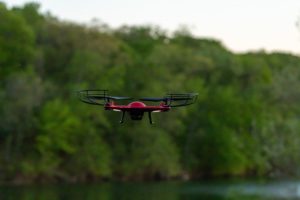Following the publication of the final rule on remote identification for drones last week, the industry has voiced opinions both for and against the concept of Remote ID as well as the actual rule. DRONELIFE is honored to publish this joint op-ed from two of the industry’s leading voices: AUVSI President and CEO Brian Wynne, and Kevin Burke, President and CEO of Airports Council International, North America (ACI-NA.)
The following is a guest post. DRONELIFE neither accepts nor makes payment for guest posts.
Flying with a Safety Net
By Brian Wynne and Kevin Burke
Recently, Santa delivered thousands of drones across the United States. And while many flying enthusiasts are eager to take to the skies, we must continue to ensure the safety and security of our national airspace.
That’s why we welcome the release of the Final Rule on Remote Identification (ID) for unmanned aircraft systems (UAS), otherwise known as drones, by the Federal Aviation Administration (FAA) earlier this week. Remote ID is the technology, and now the federal regulation, that the drone industry, airport leaders, security experts and the flying public have been collectively calling for over the past few years, and its arrival is a milestone for UAS integration into the national airspace.
Remote ID can be thought of as digital license plates for drones, and this technology and the rulemaking will enable public safety officials to understand who is operating drones and where. This awareness is critical in ensuring airspace security, which is a topic that has been in the news recently due to drone incursions over baseball games, above correctional facilities, and especially around airports.
In fact, ensuring airspace security is so critical to both the manned and unmanned aviation sectors alike that in 2019, our two organizations, the Association for Unmanned Vehicle Systems International (AUVSI) and the Airports Council International – North America (ACI-NA), jointly formed a Blue Ribbon Task Force to formally begin tackling this challenge with a particular focus on drone mitigation at airports.
Our task force brought together a cross-section of stakeholders representing the airport, UAS, and manned aviation communities to refine procedural practices and provide a policy framework to address the timely and critical issue of incursions by unauthorized UAS at airports and how best to mitigate this threat. In developing its two reports, the Task Force conferred with dozens of industry stakeholders including airports, UAS manufacturers, airlines, pilot groups, U.S. and Canadian government officials, military, commercial businesses, aviation stakeholders, and academia.
One of the Task Force’s key recommendations in its final report for UAS mitigation at airports was the requirement of Remote ID for unmanned systems in controlled airspace. Remote ID was identified as the single most important element in the next evolution of drone integration, and when needed, mitigation.
Accordingly, AUVSI and ACI-NA applaud the FAA for delivering this final rule and checking off a vital step towards ensuring the security of our national airspace. The rule gives law enforcement the tools it needs to respond to careless, clueless, and criminal UAS operations in and around airports and other critical infrastructure facilities. And that is something we can all feel very good about.
Wynne is president and CEO of AUVSI and Burke is president and CEO of ACI-NA.

Miriam McNabb is the Editor-in-Chief of DRONELIFE and CEO of JobForDrones, a professional drone services marketplace, and a fascinated observer of the emerging drone industry and the regulatory environment for drones. Miriam has penned over 3,000 articles focused on the commercial drone space and is an international speaker and recognized figure in the industry. Miriam has a degree from the University of Chicago and over 20 years of experience in high tech sales and marketing for new technologies.
For drone industry consulting or writing, Email Miriam.
TWITTER:@spaldingbarker
Subscribe to DroneLife here.
